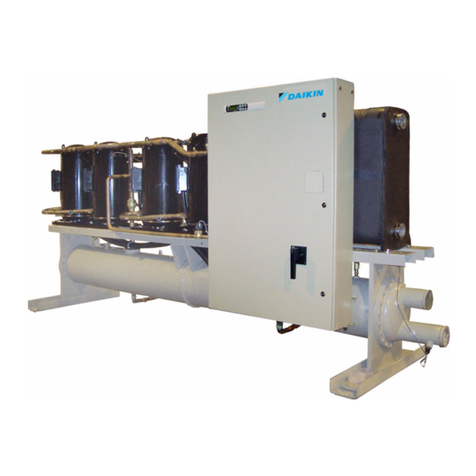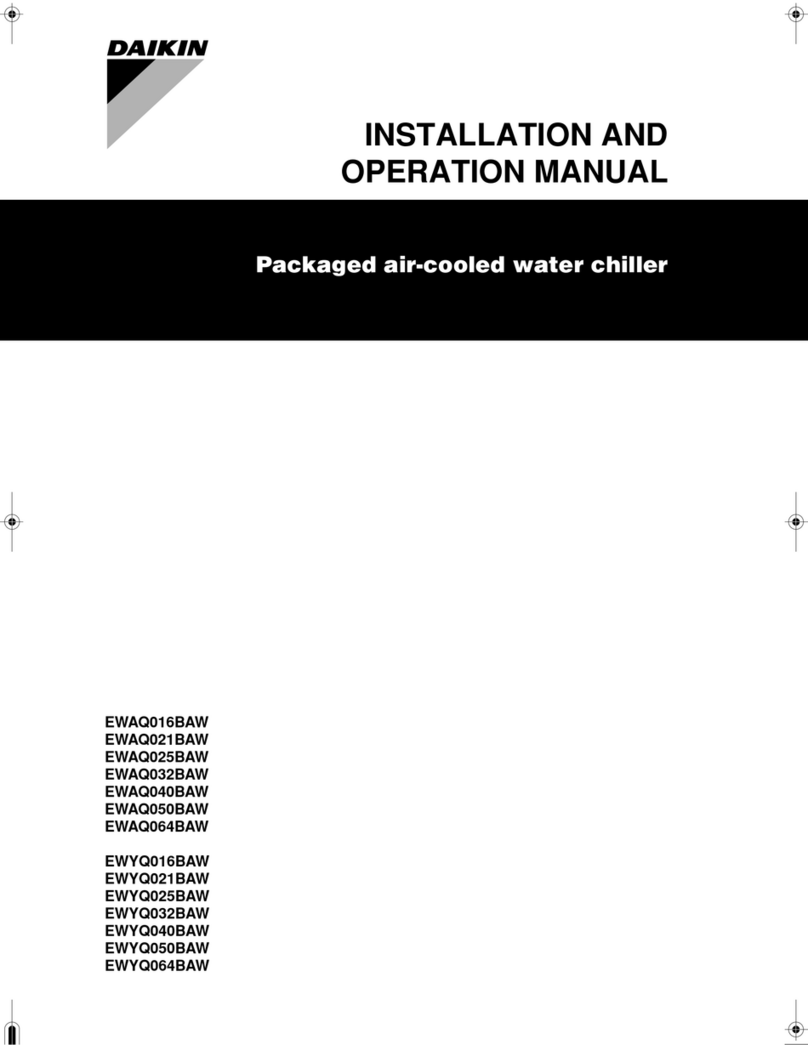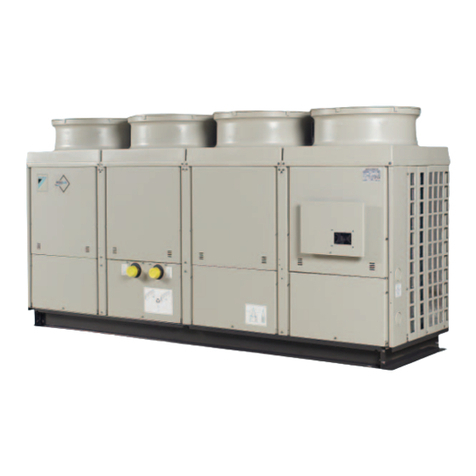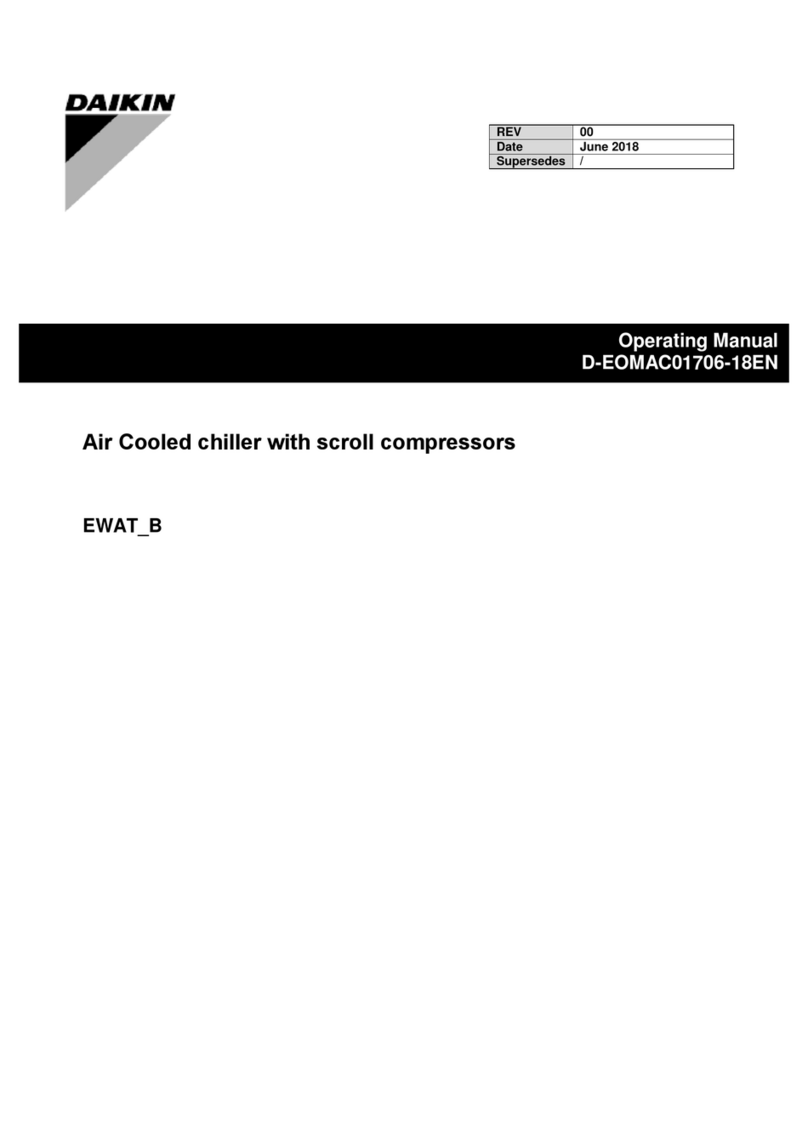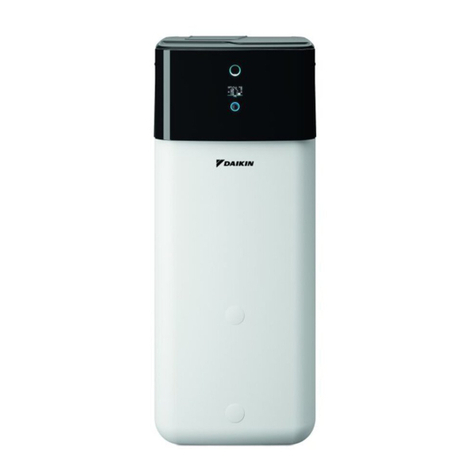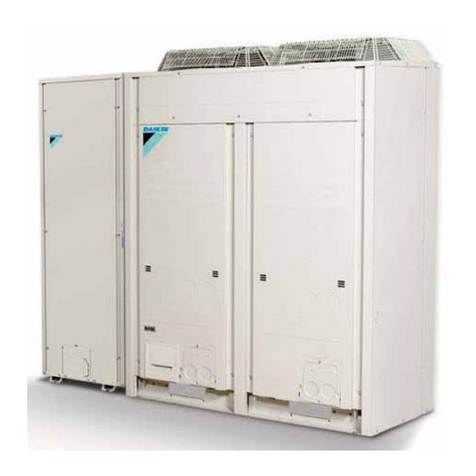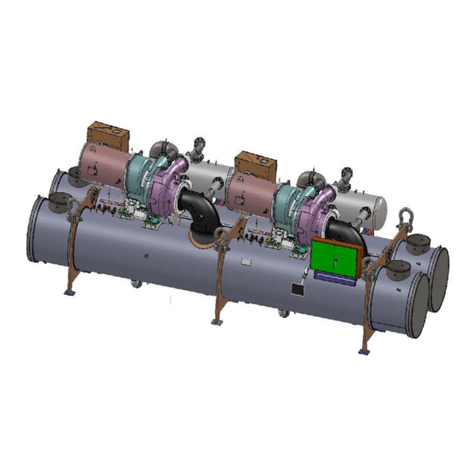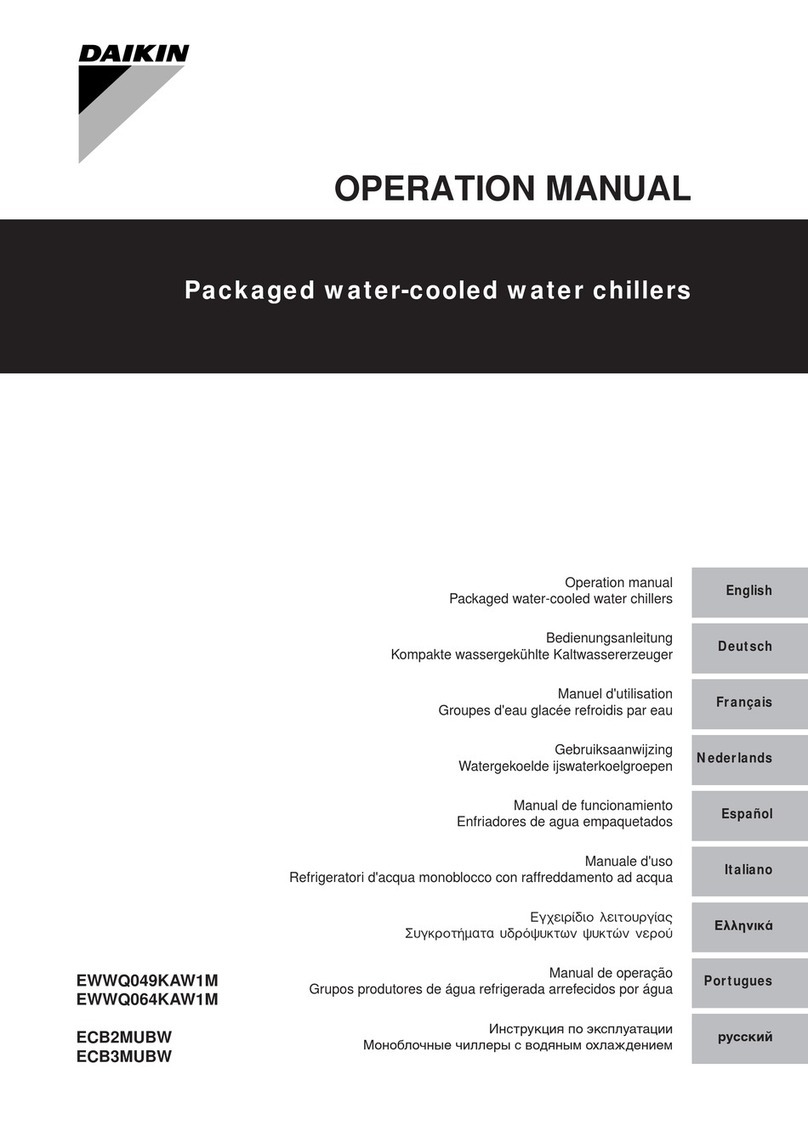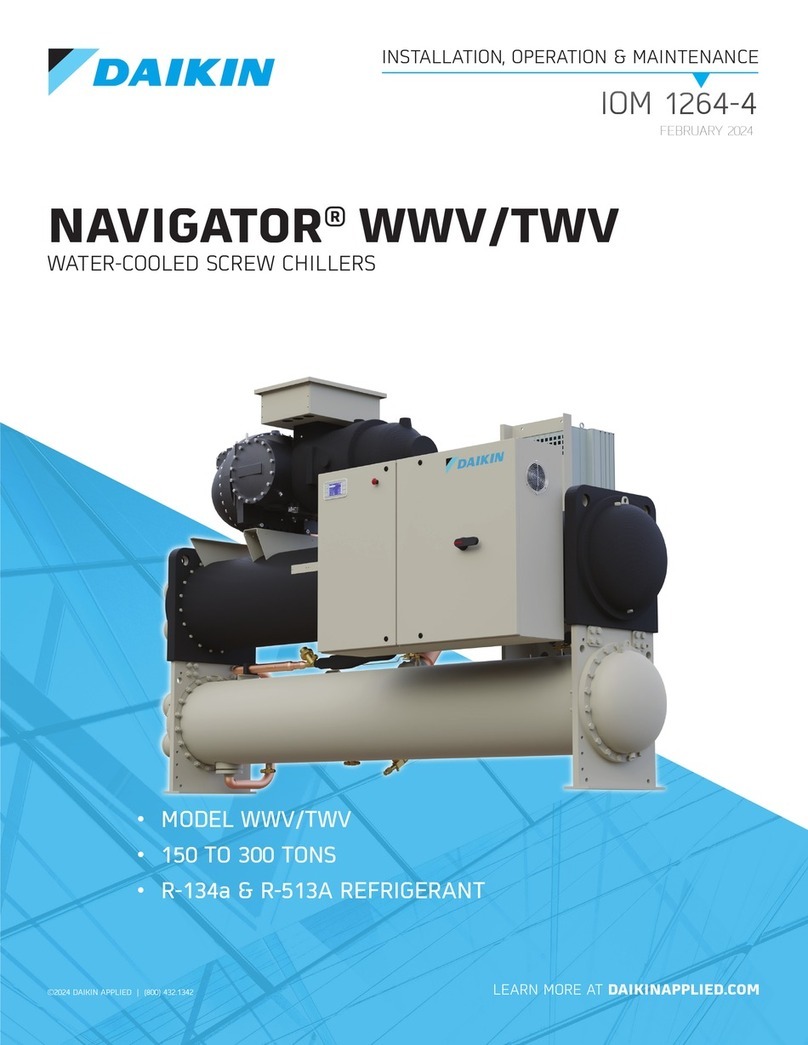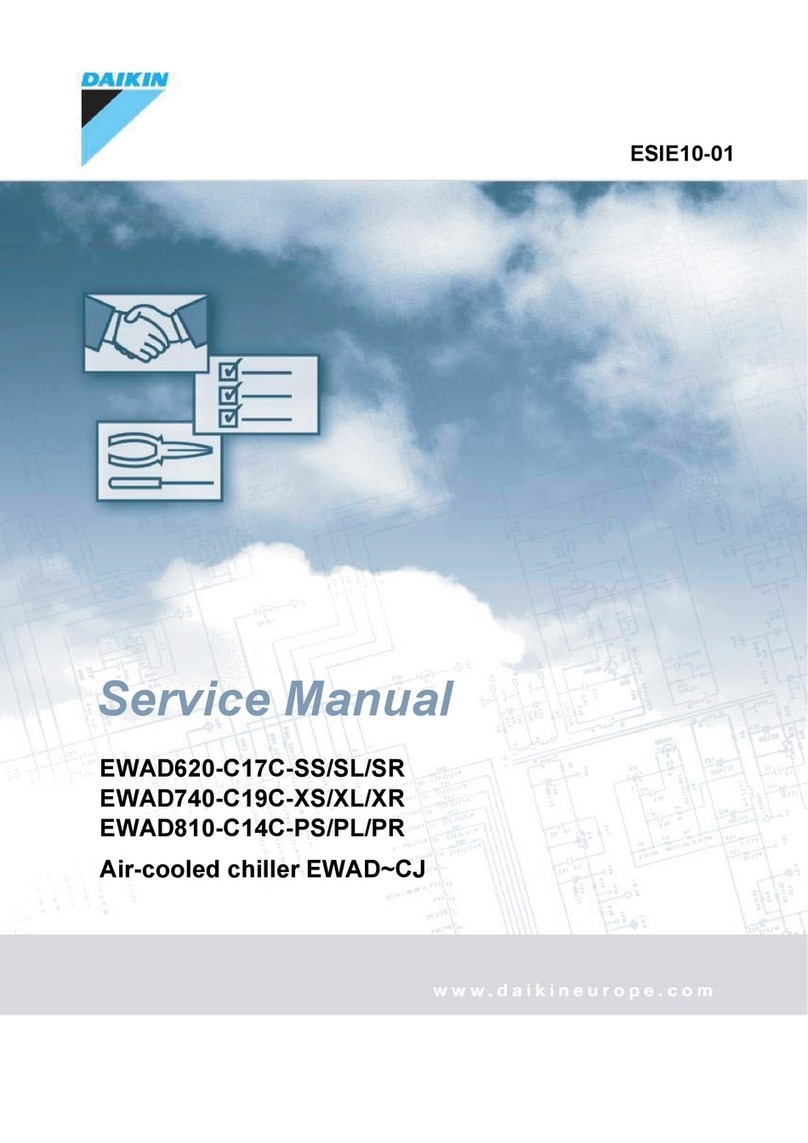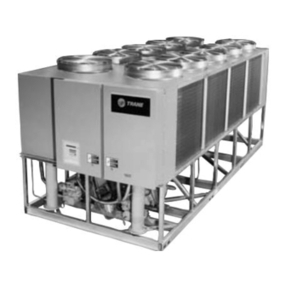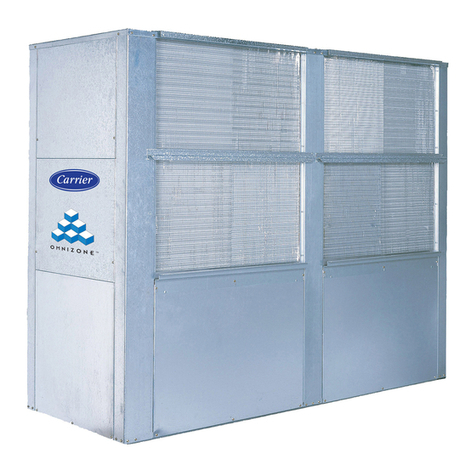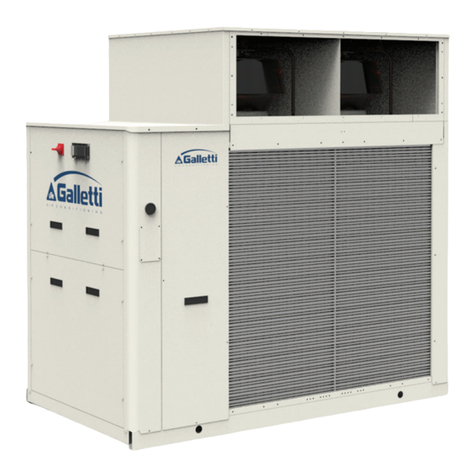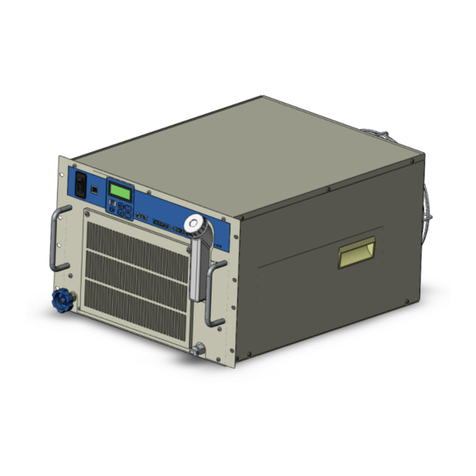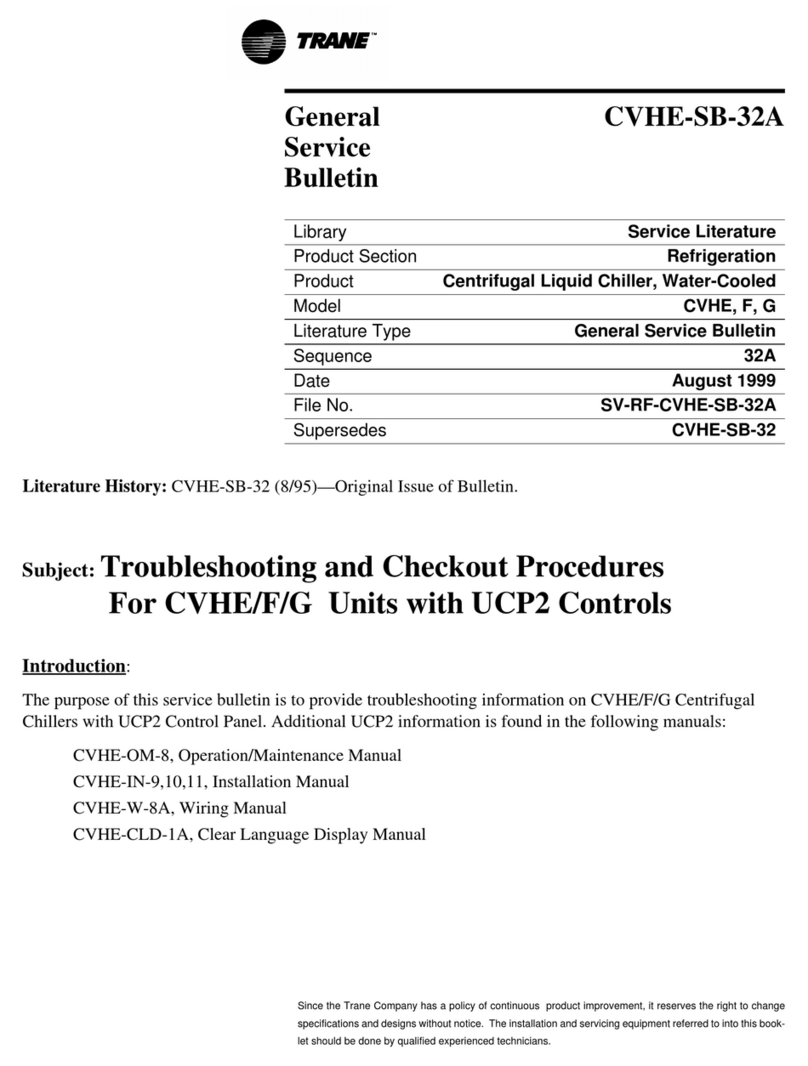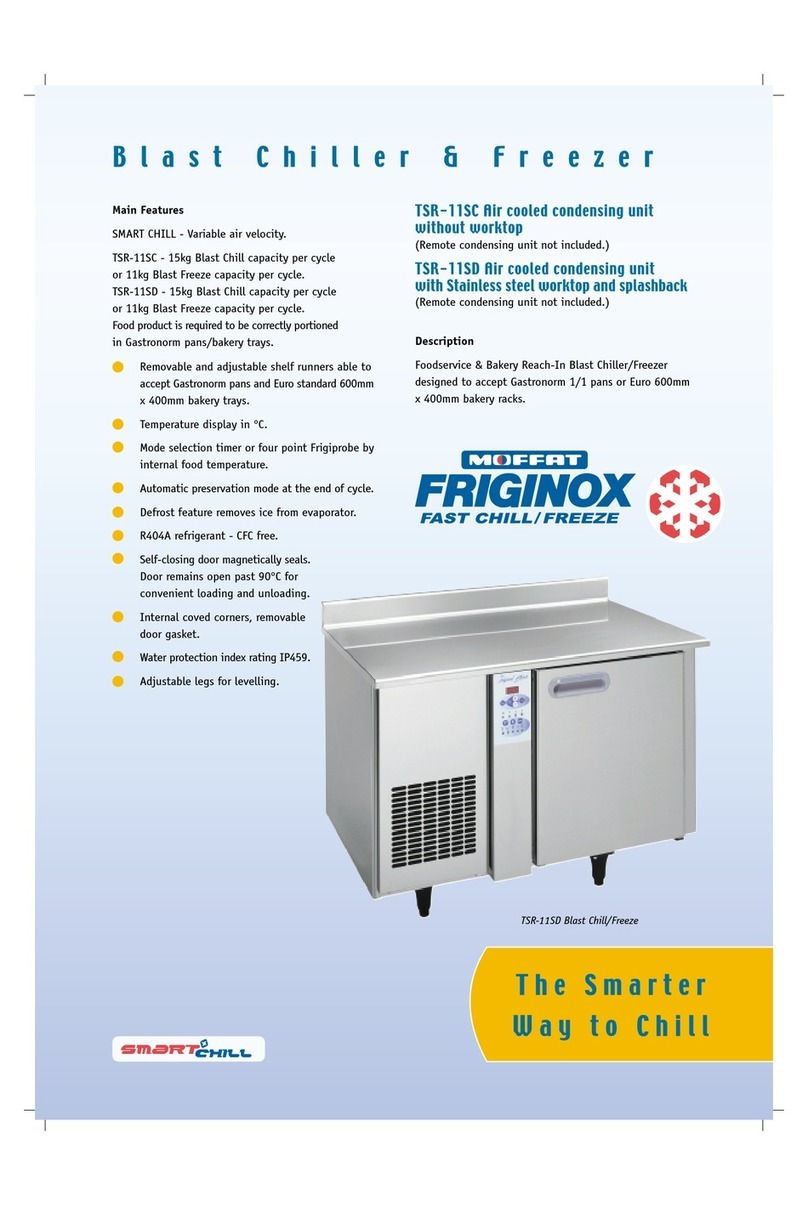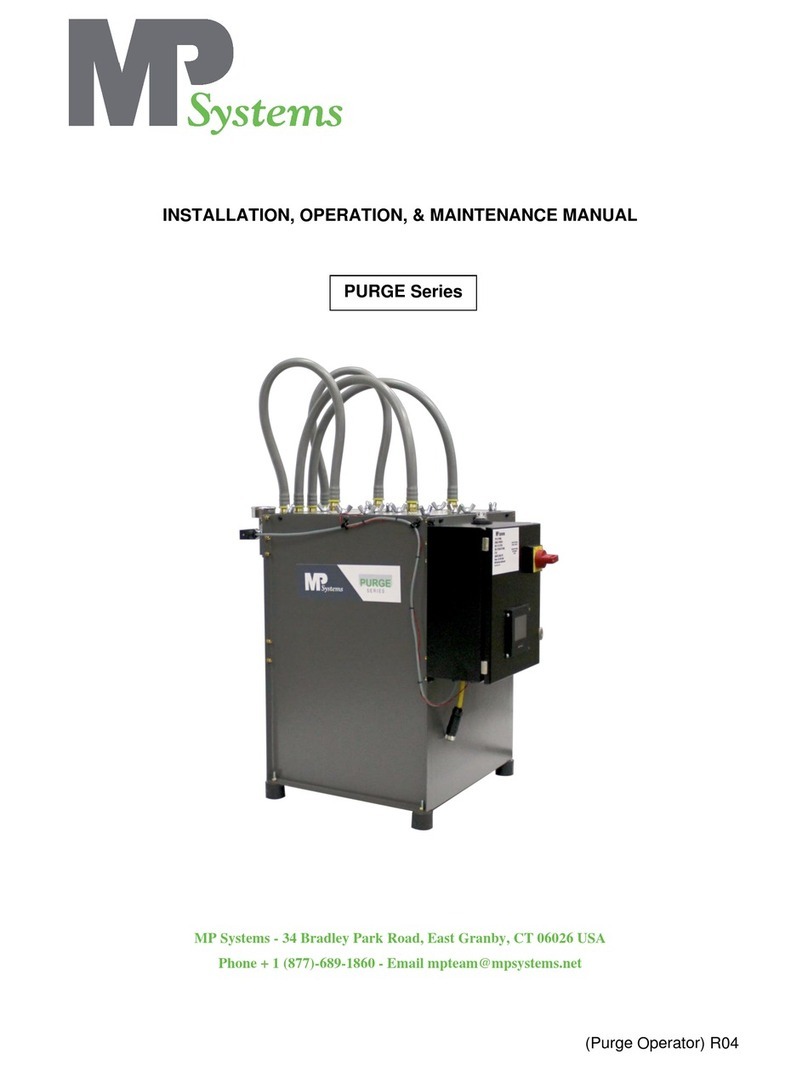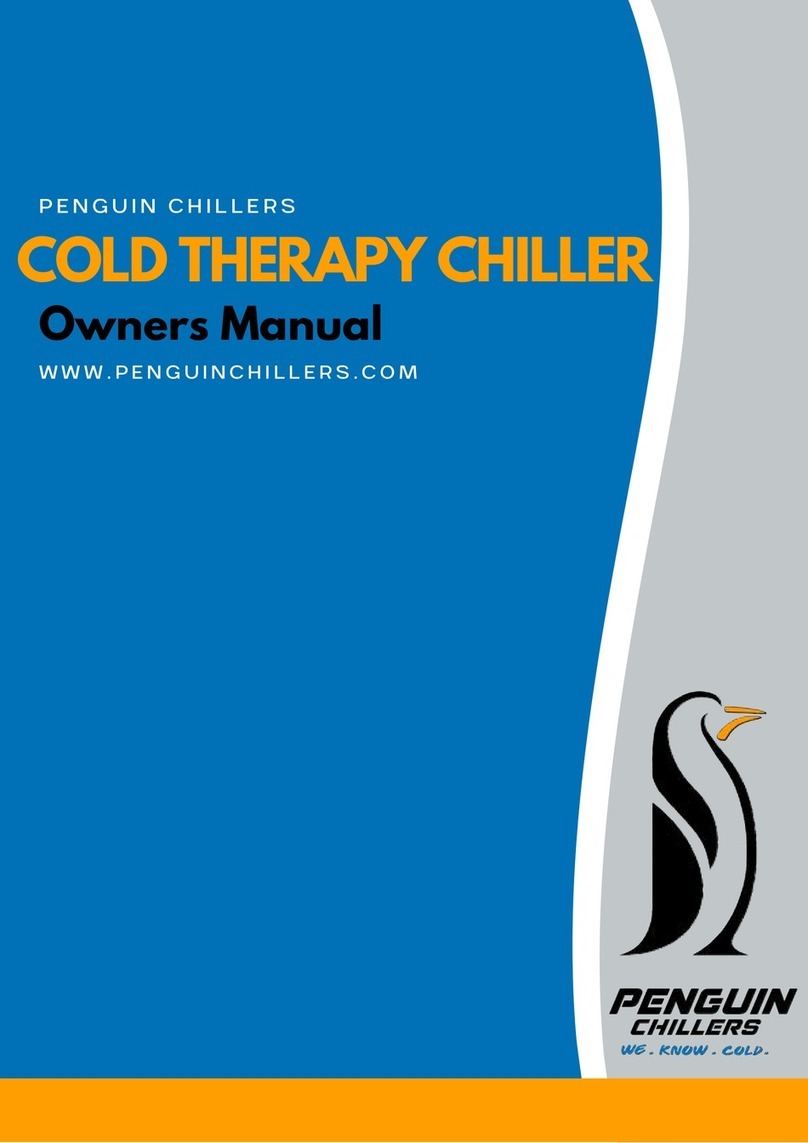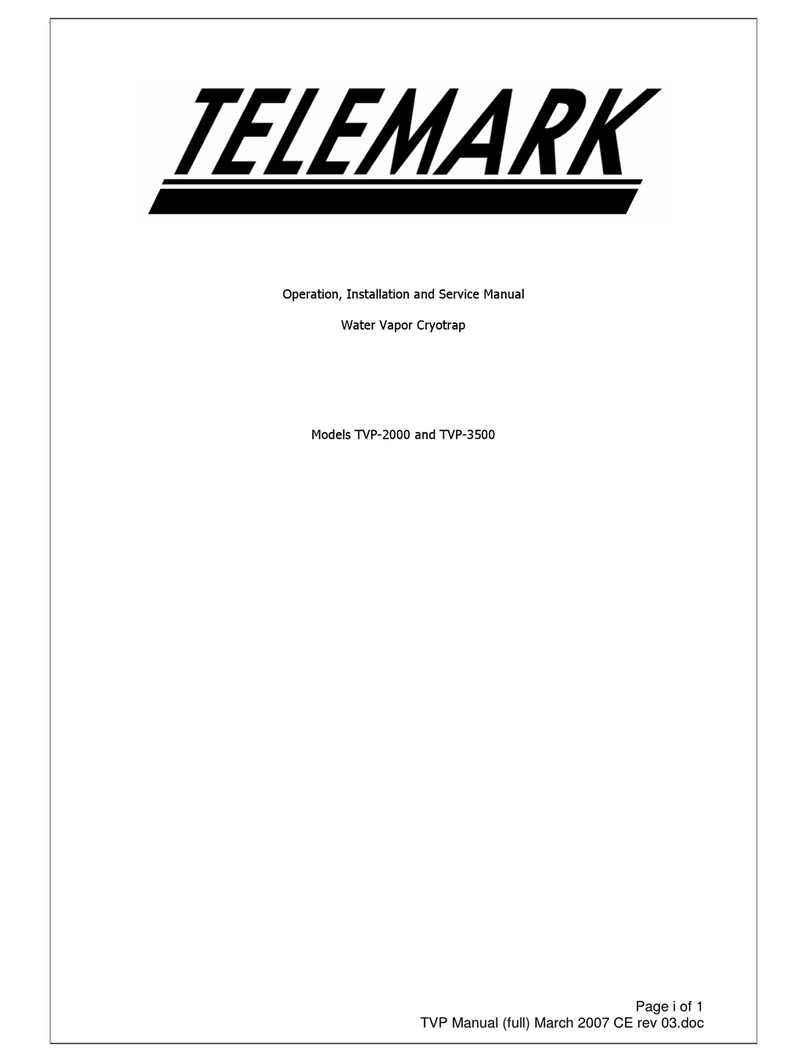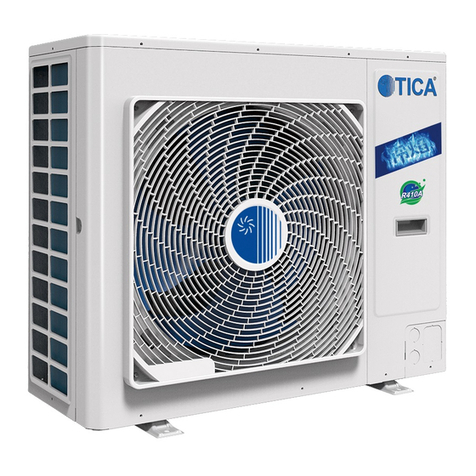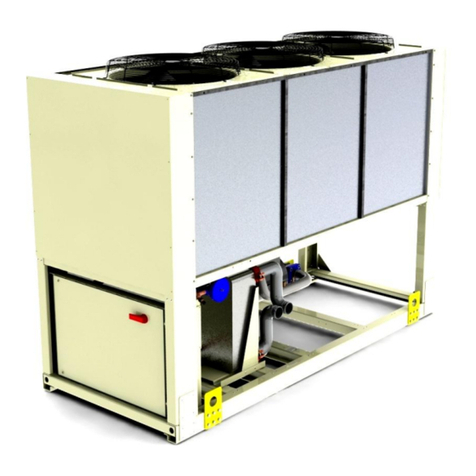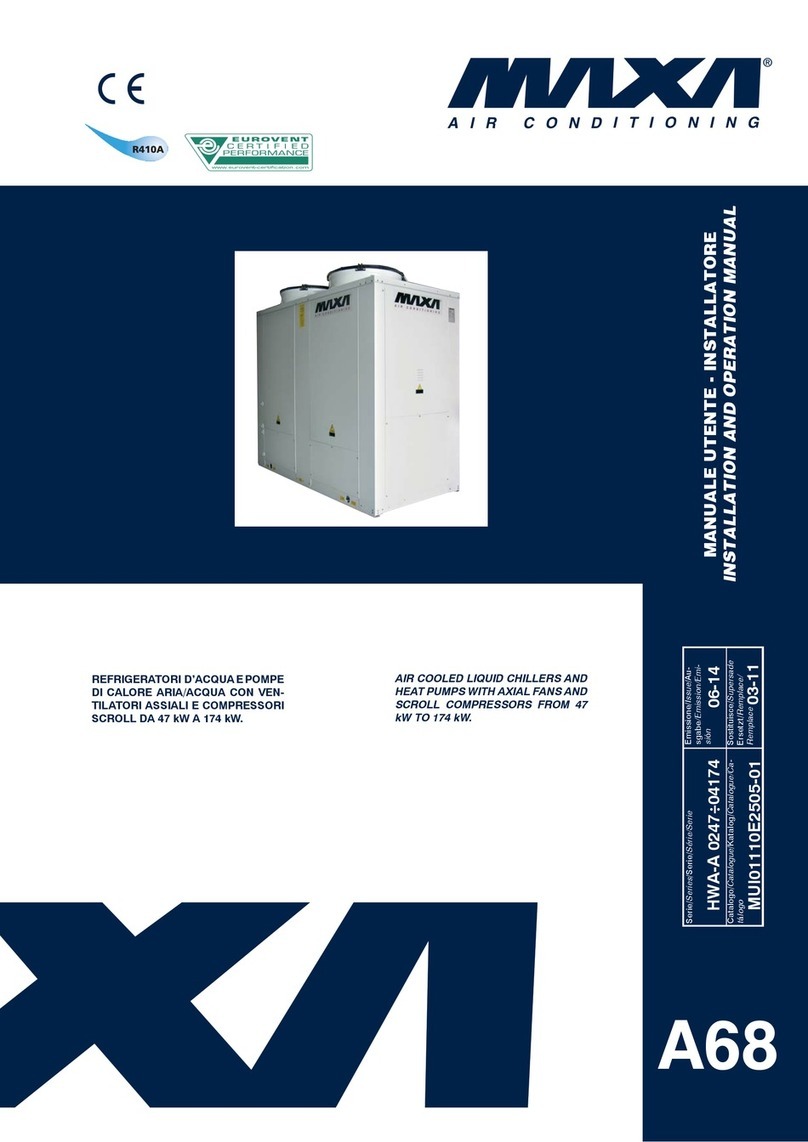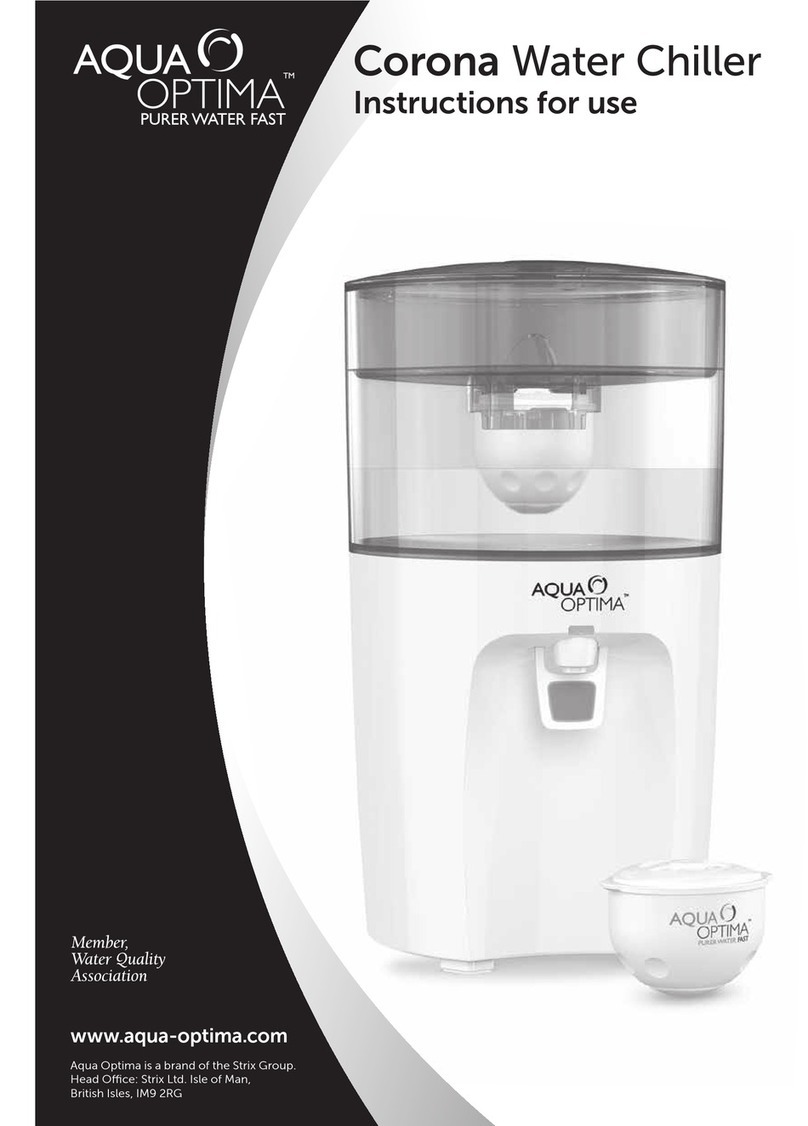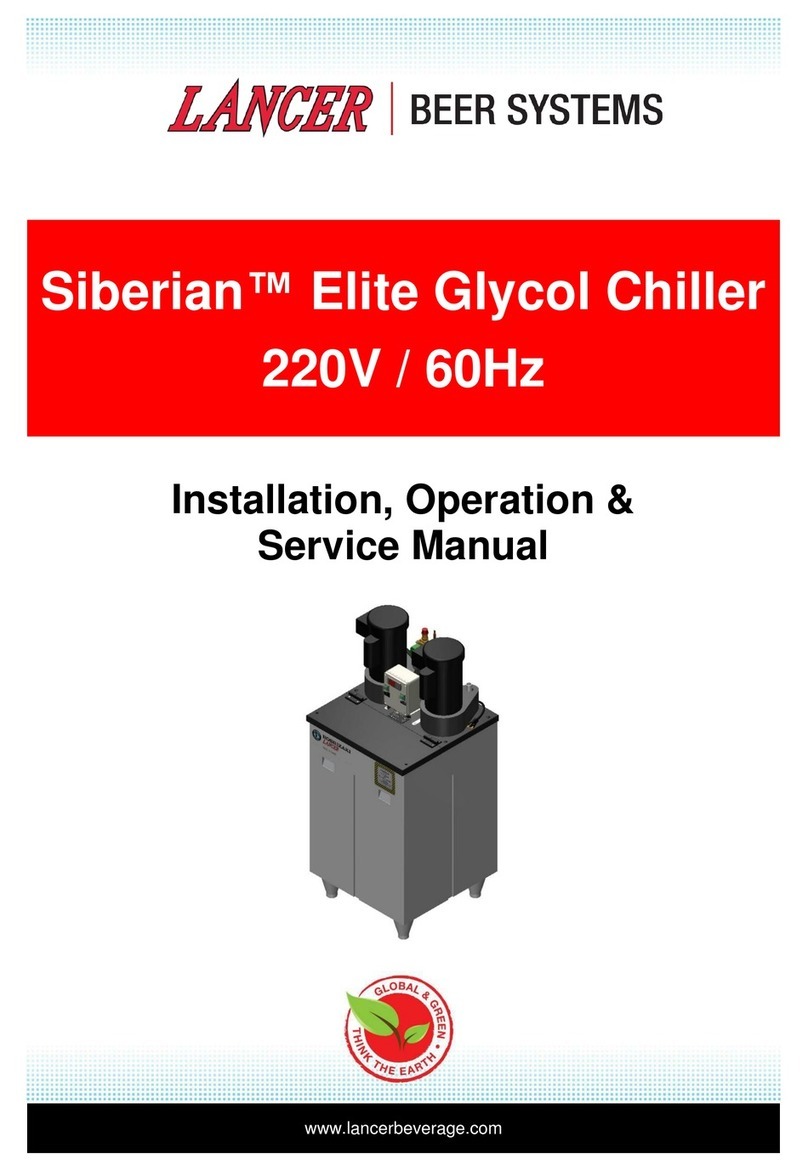
D–EIMWC01206-15EN - 2/20
Thankyouforpurchasingthischiller
Thismanualisanimportantsupportingdocumentforqualifiedpersonnelbutitisnotintendedtoreplacesuchpersonnel.
READTHISMANUALCAREFULLYBEFOREINSTALLINGAND
STARTINGUPTHEUNIT.
IMPROPERINSTALLATIONCOULDRESULTINELECTRICSHOCK,
SHORT-CIRCUIT,COOLANTLEAKS,FIREOROTHERDAMAGETO
THEEQUIPMENTORINJURETOPEOPLE.
THEUNITMUSTBEINSTALLEDBYAPROFESSIONAL
OPERATOR/TECHNICIAN.
UNITSTARTUPHASTOBEPERFORMEDBYAUTHORIZEDAND
TRAINEDPROFESSIONAL.
ALLACTIVITIESHAVETOBEPERFORMEDACCORDINGTO
LOCALLAWSANDREGULATIONS.
UNITINSTALLATIONANDSTARTUPISABOSOLUTELY
FORBIDDENIFALLINSTRUCTIONCONTAINEDINTHISMANUAL
ARENOTCLEAR.
IFCASEOFDOUBTCONTACTTHEMANUFACTURER
REPRESENTATIVEFORADVICEANDINFORMATION.
Contents
The unit purchases is a Water Chiller and/or a Heat
Pump, that is a machine designed to cool/heat the
water (or a water-glycol mixture) within certain limits
which will be listed below. The unit operates based on
the compression, condensation and evaporation of the
coolant gas, according to the Carnot cycle, and is
composed mainly of the following parts depending on
the Mode of Operation.
Cooling or Conditioning Mode:
- One or more scroll compressors that increase the
pressure of the refrigerant gas from evaporation to
condensation pressure.
- A condenser where the refrigerant gas under high
pressure condenses transferring the heat to the
water.
- Expansion valve allowing to reduced the pressure
of condensed liquid refrigerant from condensation
pressure to evaporation pressure.
- Evaporator, where the low pressure liquid
refrigerant evaporates chilling the water
Heating Mode or Heat Pump:
- One or more scroll compressors that increase the
pressure of the refrigerant gas from evaporation to
condensation pressure.
- A 4-way valve which enables the inversion of the
refrigeration cycle.
- A heat exchanger in which the refrigerant
condenses heating the water.
- Expansion valve allowing to reduced the pressure
of condensed liquid from condensation pressure to
evaporation pressure.
- A heat exchanger where the low pressure
refrigerant evaporate removing the heat from the
water.
- The operation of the heat exchangers can be
inverted using the 4-way valve, with which the use
of the heating/cooling unit can be seasonally
inverted.
General Information
All the units are delivered, together withwiring
diagrams, certifieddrawings,nameplateandDoC
(DeclarationofConformity).Thesedocumentslistallthe
technicaldataoftheunitacquiredandCONSTITUTEAN
INTEGRALANDESSENTIALPARTOFTHISMANUAL.
In case of any discrepancy between this manual and
the equipment’s documents please refer to on board
documents. In case of any doubt contact the
manufacturer representative.
The purpose of this manual is to allow the installer and
the qualified operator to ensure proper, commissioning,
operation and maintenance, without any risk to people,
animals or things.
Receiving the unit
The unit must be inspected for any possible damage
immediately upon reaching final place of installation. All
components described in the delivery note must be
inspected and checked.
Should there be evidence of damage, do not remove
the damaged components and immediately report the
extent and type of damage both to the transportation
company, asking them to inspect it, and the
manufacturer's representative, sending if possible
photos which may be useful in identifying the
responsibilities.
Damage must not be repaired before the inspection of
the transportation company representative and the
manufacturer's representative.
Before installing the unit, check that the model and
power supply voltage shown on the nameplate are
correct. Responsibility for any damage after acceptance
cannot be attributed to the manufacturer.
Storage
The unit must be protected from dust, rain, constant
exposure to the sun and possible corrosive agent when
being stored outside before installation.
Even though it is covered by a heat-shrinking plastic
sheet, it is not intended for long-term storage and must
be removed as soon as the unit is unloaded. It must in
fact be protected by tarpaulins and the like which are
more suitable for the long term.
Environmental conditions must be within the following
limits:
Minimum ambient temperature: -20°C
Maximum ambient temperature: +42°C
Maximum relative humidity: 95% without condensation.
If the unit is stored at a temperature under the minimum
ambient temperature, the components could be
damaged, while at a temperature above the maximum
ambient temperature, the safety valves could open and
discharge the refrigerant into the atmosphere.
Lastly, storage in places with condensation of humidity
can damage the electric components.


